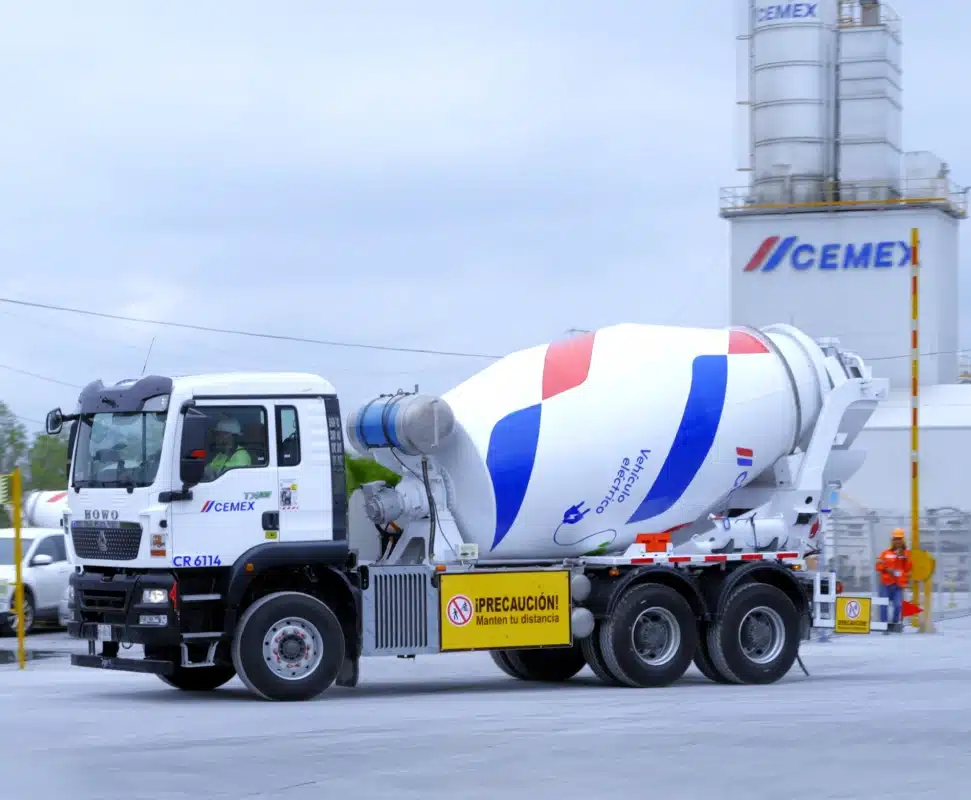Cemex Expands Electric Mixer Fleet Across EMEA
Global building materials leader Cemex announced recently that it is accelerating its efforts to decarbonize its supply chain across the EMEA region (Europe, the Middle East and Africa), investing in a growing fleet of electric ReadyMix trucks that deliver significant environmental and community benefits. Following the successful launch of electric cement mixers in Germany and the UAE in 2023, Cemex has since expanded deployments to France, Poland, the Czech Republic and Spain. Germany has also strengthened its EV fleet further in 2025, adding seven new electric mixers to support this initiative.
These electric mixers represent a key step forward in Cemex’s commitment to reduce carbon emissions and improve urban logistics. Capable of slashing carbon emissions by up to 100%, these zero-emissions trucks also operate with significantly lower noise levels, an essential advantage in busy urban environments where quiet operation reduces disturbances for residents and road users. Importantly, Cemex has ensured that these electric trucks maintain the same operational efficiency as conventional mixers, including modern safety features and the same payload capacity.

Matthew Wild, EMEA VP for Supply Chain and Procurement, emphasized the importance of electrifying Cemex’s vehicle fleet to meet sustainability goals. “Transport is one of the key areas where Cemex strives to reduce its CO₂ emissions, which is why we are investing in and implementing electric mixers across our EMEA operations,” Wild said. “These trucks incorporate renewable energy sources, enabling us to provide more sustainable solutions for transporting ready-mix materials while also being a better neighbor and fellow road user.”
This move is an integral part of Cemex’s ambitious “Future in Action” strategy, which is focused on achieving net-zero CO₂ emissions by 2050. Central to this strategy is the adoption of renewable energy sources and more sustainable technologies, ensuring that Cemex’s transport and logistics operations keep pace with the company’s broader decarbonisation goals. Supporting these efforts are Cemex’s R&D, innovation and business development projects, coordinated through its global research network led by Cemex Research Centers in Switzerland, reflecting the company’s dedication to continuous improvement and sustainable innovation.
Europe Leads the Charge with Electric Cement Mixers, but the U.S. Lags Behind
Despite this promising progress overseas, the United States has yet to embrace electric cement mixers, a critical advancement in sustainable construction technology. This gap is significant, given the scale of U.S. construction activity and the pressing need to decarbonize transport and heavy-duty equipment. Cement mixers, essential for the concrete that underpins infrastructure, represent a major opportunity to cut emissions and improve air quality if the technology is deployed at scale.
The benefits of electric cement mixers are clear: they offer comparable payloads and performance to their diesel counterparts while eliminating tailpipe emissions and dramatically reducing noise pollution. In the U.S., broader adoption of these mixers would be a key step forward for the construction sector’s efforts to meet climate targets and enhance public health in densely populated areas.
As Europe’s construction industry reaps the rewards of these forward-looking investments, it’s time for the U.S. to catch up. With growing pressure to decarbonize and an increasing focus on environmental stewardship in major cities, electric cement mixers can’t arrive soon enough for American streets and worksites.

Electric Vehicle Marketing Consultant, Writer and Editor. Publisher EVinfo.net.
Services